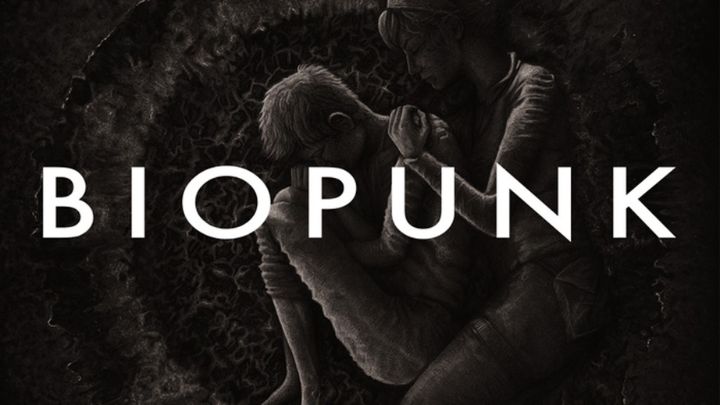What is Raypunk?
Raypunk: definition
Raypunk is an exciting and imaginative subgenre that fuses elements of science fiction, retro aesthetics, and visionary storytelling. It envisions a world where advanced technologies, steam-powered machinery, and fantastical inventions coexist with the style and glamour of a bygone era. Its roots can be traced back to a fascinating blend of cultural influences and historical contexts that have shaped its unique identity.
Cultural context and historical background

To truly understand the essence of Raypunk, it's essential to delve into its cultural context and historical background. Emerging during the latter half of the 20th century, Raypunk draws inspiration from the technological advancements, social changes, and cultural movements of that era. It mirrors a world fascinated by futuristic possibilities and the allure of scientific progress, capturing the spirit of a time when society was grappling with the complexities of a rapidly evolving world.
With the rise of space exploration, the Cold War, and the dawn of the computer age, people's visions of the future were filled with wonder and uncertainty. It was a time of immense creativity and speculation, where artists, writers, and filmmakers sought to envision what lies ahead. This backdrop laid the foundation for the birth of Raypunk, a genre that offers a unique blend of retro nostalgia, speculative futures, and a celebration of the human imagination.
Key features of Raypunk

One of the prominent features of Raypunk is its visually striking aesthetic. Drawing inspiration from the Victorian era, Steampunk, and cyberpunk, Raypunk presents a fusion of intricate details, ornate designs, and advanced technologies. It showcases a world where steam-powered machinery, clockwork mechanisms, and futuristic gadgets coexist, creating a visual feast for the imagination.
In addition to its visual appeal, Raypunk is known for its thematic exploration of societal and technological advancements. It often delves into thought-provoking questions about the relationship between humans and machines, the impact of scientific progress on society, and the ethical implications of technological innovation. It offers a platform to reflect on the consequences of our actions and the potential futures that await us.
Furthermore, Raypunk frequently incorporates elements of adventure, mystery, and even romance into its narratives. It transports readers and viewers to immersive worlds filled with airships soaring through the skies, secret societies operating in the shadows, and characters navigating a complex web of intrigue. These elements combine to create captivating stories that keep audiences engaged and eager to explore the realms of Raypunk.
Raypunk in popular culture
 Raypunk has made a significant impact on popular culture, permeating various artistic mediums and captivating audiences worldwide. From literature to film and television, Raypunk has left an indelible mark, showcasing its imaginative and captivating narratives.
Raypunk has made a significant impact on popular culture, permeating various artistic mediums and captivating audiences worldwide. From literature to film and television, Raypunk has left an indelible mark, showcasing its imaginative and captivating narratives.
Notable Raypunk literature and authors
Several influential works of literature have embraced the essence of Raypunk, contributing to the genre's rich tapestry. Authors such as Philip Reeve with his "Mortal Engines" series, China Miéville's "Perdido Street Station," and K.W. Jeter's "Infernal Devices" have crafted compelling stories set in worlds that blend steampunk aesthetics with futuristic elements. These works have garnered critical acclaim and established themselves as pillars of Raypunk literature, inspiring countless readers and fellow authors alike.
Raypunk in film and television
Raypunk has also found its way onto the screens, captivating audiences through the visual storytelling of film and television. Iconic movies such as "Blade Runner" and "Metropolis" have incorporated Raypunk elements, showcasing futuristic cityscapes, advanced technologies, and thematic explorations of human nature. In the realm of television, series like "The Expanse" and "Penny Dreadful" have embraced Raypunk's aesthetic and narrative foundations, presenting viewers with richly detailed worlds and captivating storylines.
How is Raypunk different from other subgenres like Retro-Futurism or Steampunk?
- Raypunk is characterized by its focus on the retro-futuristic aesthetics of the mid-20th century, specifically influenced by the art and architecture of the Raygun Gothic movement. It emphasizes sleek lines, bold geometric shapes, and a vision of a technologically advanced future inspired by space travel and atomic power. Raypunk often incorporates elements of science fiction, imaginative storytelling, and a sense of adventure.
- Retro-Futurism also combines elements of the past and the future but is not limited to a specific time period or aesthetic. It encompasses various eras, from the Art Deco and Space Age of the early 20th century to the retro styles of the 1960s and beyond. Retro-Futurism explores different visions of the future as imagined in the past, often incorporating nostalgic elements, vintage technology, and a sense of whimsy. It can be influenced by various artistic movements and historical contexts.
- Steampunk is characterized by its fusion of Victorian-era aesthetics and steam-powered technology. It imagines a world where steam power remained dominant, resulting in a highly stylized and industrialized Victorian era. Steampunk often features intricate clockwork mechanisms, brass and leather accents, and an overall sense of Victorian elegance. It combines elements of science fiction, fantasy, and adventure, with an emphasis on the Victorian era's fashion, culture, and societal structures.





Leave a comment